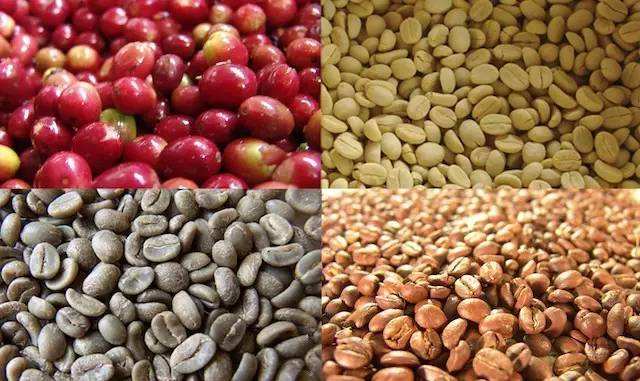The reasons for the sharp decline in coffee production in Costa Rica
Follow the caf é (Wechat official account vdailycom) and found that Beautiful Cafe opened a small shop of its own.
Coffee exports account for 25% of Costa Rica's total exports. Costa Rica has also benefited from the establishment of the Central American Institute for Agricultural Research (TurrialbaoftheCentralAmericanAgriculturalResearchlnstitute, referred to as IAAC) in Tarasu, which is an important international research centre.
Costa Rica's coffee industry, originally controlled by the Costa Rican Coffee Industry Company (InstitutodelCafedeCostaRica, ICAFE), has been taken over by the official Coffee Committee (OficinadelCafe). Among the exported coffee, those products that are considered to be of substandard quality are colored with blue vegetable dyes and then transferred back to China for sale. Coffee consumed domestically (dyed blue or last dyed) accounts for about 10% of total production, and local per capita coffee consumption is twice that of Italy or the United States.

In addition, while Costa Rica has many advantages in growing coffee at higher elevations, the resulting additional transport costs must be taken into account, which is likely to make coffee production unprofitable. The coffee industry in Costa Rica has adopted new technologies to increase efficiency, including the use of "electric eyes" to select beans and identify coffee beans of irregular size.
Costa Rica's coffee skills are very high, regardless of breeding, planting or post-processing (washing, half-sun) is enough for all producing countries to learn from. However, the supply of famous producing areas falls short of demand, and unscrupulous operators often mix them with high-quality beans in other second-rate producing areas, and the producing areas hundreds of miles away from Tarazhu also dare to fish in troubled waters in the name of Tarazhu, so they have to be careful.
Because Costa Rica often suffers from severe natural disasters, and local people drink coffee twice as much as the United States and Italy, and because Costa Rican coffee is often blended, China imports less and tends to be exported to Japan, the United States and Italy. So there is less Costa Rican coffee in China, so the price range is higher.
Important Notice :
前街咖啡 FrontStreet Coffee has moved to new addredd:
FrontStreet Coffee Address: 315,Donghua East Road,GuangZhou
Tel:020 38364473
- Prev

Costa Rican coffee taste, how to drink Costa Rican coffee
Costa Rican coffee taste Costa Rican coffee particles full, acidity ideal, oddly thick aroma. Pay close attention to the coffee comment (Weixin Official Accounts vdailycom ) and find that the beautiful cafe has opened its own small shop. Costa Rica's coffee property was originally controlled by Instituto del Caf de Costa Rica (ICAFE), but now it has been controlled by ICAFE.
- Next

Introduction to the planting Flavor of Costa Rican Coffee Tarasu
Following Cafe Review (official Wechat account vdailycom) found that the flavor of Costa Rica is always steady, without the sharpness of Guatemala, and tastes quite gentle, sour, sweet and bitter chocolate, inclusive and well balanced, making it the classic flavor of gourmet coffee. The seven major coffee producing areas are as follows: Durieba Valley (capital)
Related
- Detailed explanation of Jadeite planting Land in Panamanian Jadeite Manor introduction to the grading system of Jadeite competitive bidding, Red bid, Green bid and Rose Summer
- Story of Coffee planting in Brenka region of Costa Rica Stonehenge Manor anaerobic heavy honey treatment of flavor mouth
- What's on the barrel of Blue Mountain Coffee beans?
- Can American coffee also pull flowers? How to use hot American style to pull out a good-looking pattern?
- Can you make a cold extract with coffee beans? What is the right proportion for cold-extracted coffee formula?
- Indonesian PWN Gold Mandrine Coffee Origin Features Flavor How to Chong? Mandolin coffee is American.
- A brief introduction to the flavor characteristics of Brazilian yellow bourbon coffee beans
- What is the effect of different water quality on the flavor of cold-extracted coffee? What kind of water is best for brewing coffee?
- Why do you think of Rose Summer whenever you mention Panamanian coffee?
- Introduction to the characteristics of authentic blue mountain coffee bean producing areas? What is the CIB Coffee Authority in Jamaica?

